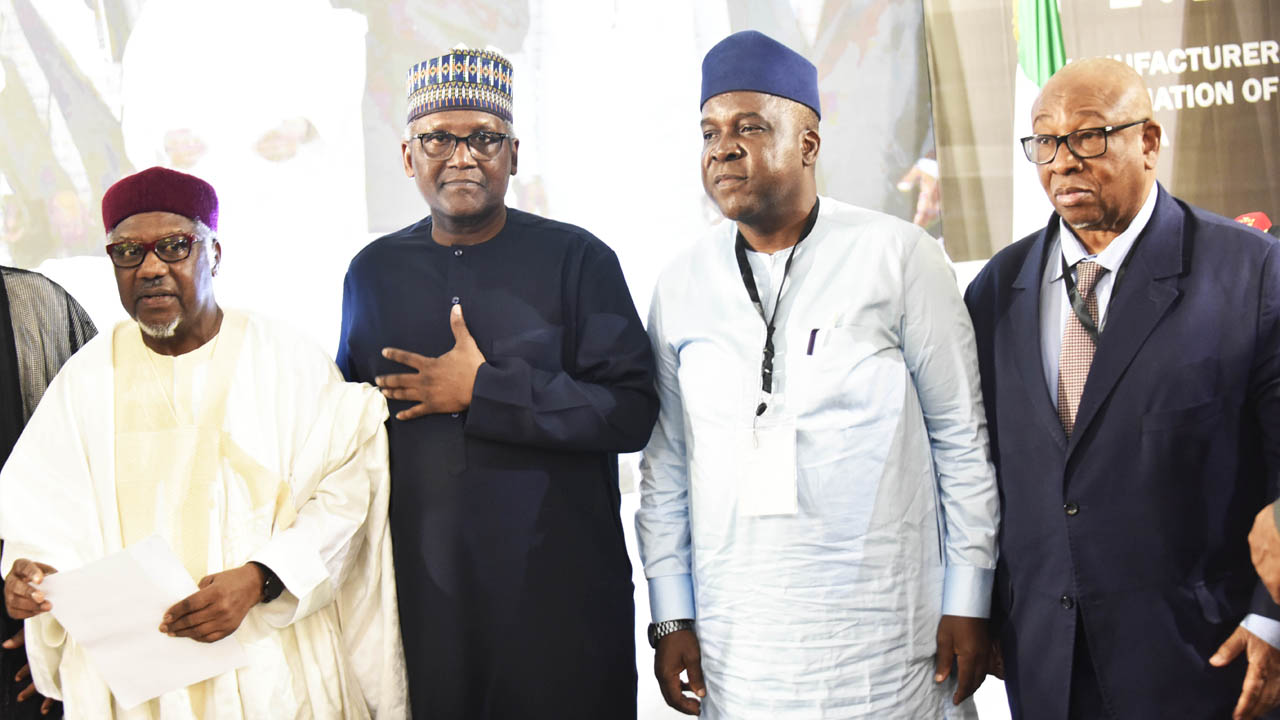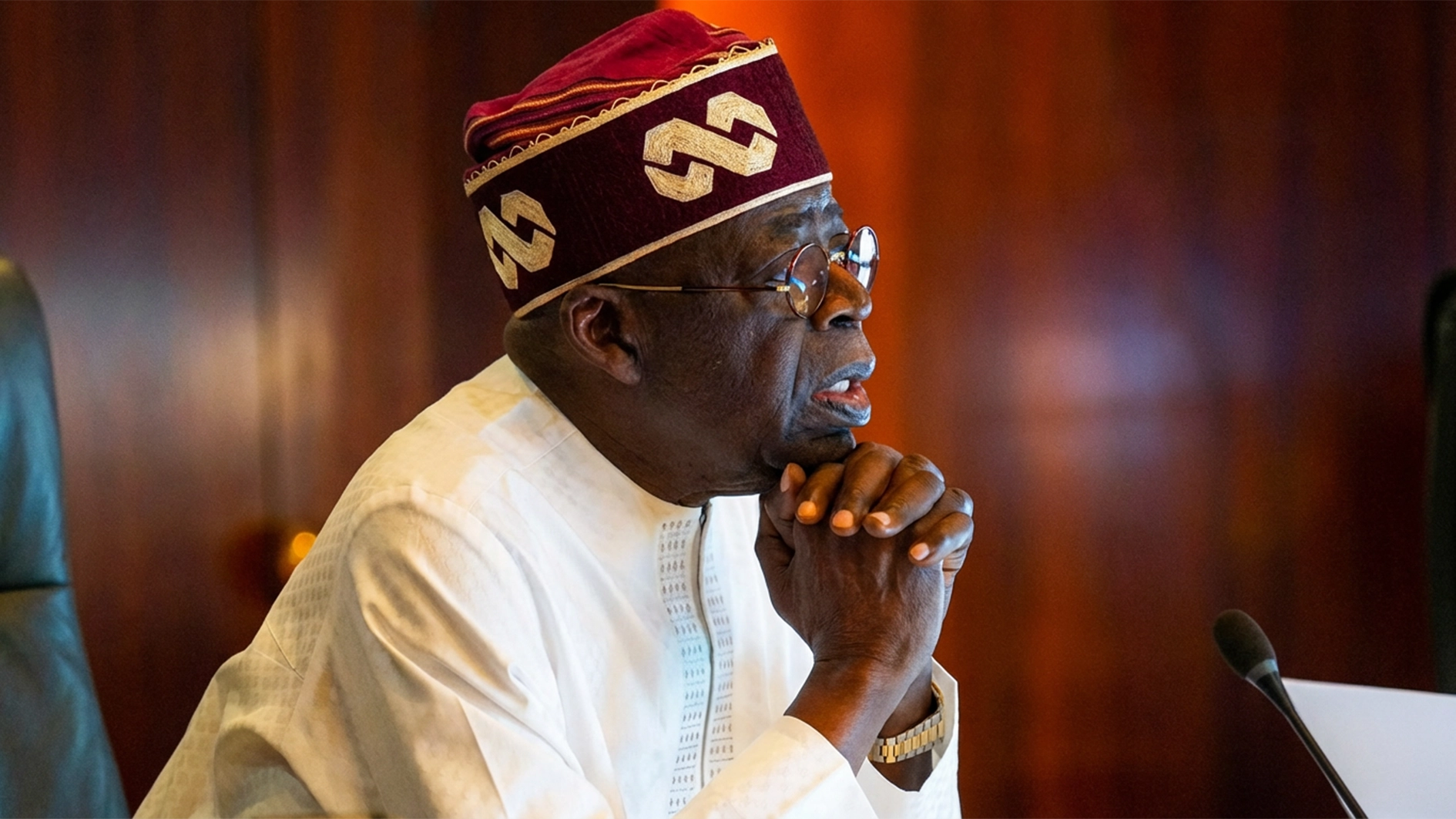
Business magnate and President of Dangote Group, Aliko Dangote, has identified priority investments in infrastructure and core industries as solutions to boosting Nigeria’s economy.
Against the backdrop of the decline in the fortune of the manufacturing sector, Africa’s wealthiest man urged the Federal Government to employ strategic prioritisation of investments in infrastructure to reverse the trend.
He made this known in his address as Guest Speaker at the landmark 50th Annual General Meeting (AGM) of the Manufacturers Association of Nigeria (MAN) and the Second Adeola Odutola Lecture held in Lagos, yesterday.
Expressing optimism, Dangote said with the collective effort of all stakeholders, it is feasible to move Nigeria from a “developing nation” to a “newly industrialised nation.”
He said it is imperative that the familiar challenges limiting the pace of industrialisation are frontally addressed while setting a clear-cut agenda for the next 10 years.
During the AGM, themed: ‘An Agenda for Nigeria’s Industrialisation for the Next Decade’, where a ‘Blueprint for Accelerated Development of Manufacturing in Nigeria 2.0’ was unveiled, the foremost entrepreneur advocated jail terms for dealers in foreign textile materials to discourage imports and boost local production.
For legislative backup, he sought the enactment of a law prohibiting the sale of imported fabrics in the country.
Dangote identified measures needed to allow Nigeria to speed up its industrialisation process and development growth.
These include investment in infrastructure; creation of a business-enabling policy framework; development of core industries; macroeconomic stability; facilitation of sectoral linkages and sustaining of the Federal Government’s recent efforts at ensuring the security of life, property and investments across the nation.
Dangote further examined the performance of the industrial sector in Nigeria; identified the nexus between industrialisation and economic development, with Nigeria and China as a case study; analysed the manufacturing sector in the country, with a focus on its growth trajectory, current status and challenges, and set an agenda for the next 10 years with an implementation roadmap.
According to him, “the experience in various parts of the world has shown that industrialisation drives economic growth and development, which improves living standards, as evidenced by the high output and per capita income in industrialised countries.
“The rate of industrialisation in Nigeria has been slow, as evidenced by the low contribution of manufacturing to GDP, poor capacity utilisation and constrained export of manufactured products within and outside the continent.
“For instance, Nigeria’s share of world output of 0.41 per cent, ranked 29th, which is unimpressive, considering its size and resource endowments. It ranks poorly when compared with India at (3.1 per cent), South Korea (3.0 per cent) and China (28.7 per cent).
“Nigeria’s industrialisation process has been greatly challenged by structural and institutional constraints, particularly funding. These factors have over the years cumulatively contributed to its disappointing performance.
“For instance, in the last decade, the average share of manufacturing value added to GDP in countries, such as China and Malaysia stood at 41 per cent and 38 per cent respectively, compared to 25 per cent in Nigeria.
“In terms of capacity utilisation, a major performance indicator, which reflects the ability of manufacturing companies to meet rising demand without increasing cost, Nigeria achieved a rate of 55 per cent compared to 76 per cent and 78 per cent in China and South Africa respectively.
“The country’s dwindling industrial performance has significant socio-economic implications, as poverty and unemployment continue to rise.
“From 1960 to 2003, the development trajectory of China by far outpaced that of Nigeria within the same period, even though Nigeria began on a seemingly better footing. It is, therefore, important to track where Nigeria ‘dropped the ball’, with a view to repositioning the country on the path of growth, development and social uplift.
“Based on the comparative analysis of Nigeria and China, one can safely make the following deductions: the numerical strength of a nation (population) can indeed be translated into economic wealth; steady growth in manufacturing output is possible when the operating environment is conducive;
“No nation can easily transit from ‘developing’ to ‘newly industrialised’ without a vibrant manufacturing sector; effective implementation of long-term plans backed with policy consistency will promote enduring economic growth and development.”
According to Dangote, “Nigeria’s manufacturing sector is dominated by light manufacturing with only a few firms operating in the heavy segment of the sector. There are several factors that need to be in place to accelerate the growth of the manufacturing sector.
“These include security and rule of law, industry-oriented government policy; adequate infrastructure; industry-oriented research and development; a well-developed SME sector; building of human capacity, and embrace of technology to improve efficiency through automation of manufacturing processes.”






